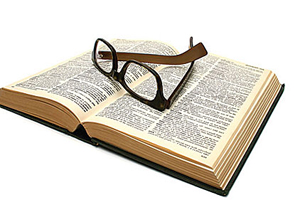
|
Getting your technical ducks in a row is important in this business of ours. Hey, folks are going to ask questions and it’s good to have correct answers for them. It’s what adds value to our flesh and bones.
You can get a grand technical education by attending seminars, webinars and tradeshows, and by reading heating textbooks and fine magazines such as this one. But if you want to add even more value to what you bring to your customers you should spend some time developing your imagination (yes, that’s possible) and your sense of our industry’s history, which also is America’s history.
So here’s a brief reading list I think you’ll enjoy as much as I did. Read these books and you won’t just be more technically competent, you’ll also be fascinating. And who doesn’t want to be fascinating?
“Einstein’s Dreams” by Alan Lightman is a little book that will make you think about time in a different way. I first read this while waiting for a plane in some forgotten airport. It was a quick read and when I was through with it I stared off into space for a few minutes and then started to read it all over again. It’s a good one for flexing your imagination, something we should all do at least once a day.
“Flu: The Story of the Great Influenza Pandemic of 1918 and the Search for the Virus That Caused It” by Gina Bari Kolata. I heard about this book while driving and listening to the author being interviewed on a PBS station. She explained how nearly 50 million people died from the Spanish Influenza in that horrible winter of 1918 and I let that number roll around in my mind for awhile. I wondered why I had never learned about this in school, so I read the book.
This event was so horrific that it literally was erased from the common memory. It also had a dramatic impact on the development of central heating because the Spanish flu was an airborne virus and people became very afraid of the air in their homes. You can see the impact of this in the engineering texts of the 1920s as engineers began to recommend sizing boilers and radiation for open-window ventilation. Read this book and you’ll never again look at an old cast-iron radiator in quite the same way.
“Heat and Cold: Mastering the Great Indoors: A Selective History” by Bernard Nagengast, et al. ASHRAE put this one together to commemorate its centennial in 1994. Read all about your roots and enjoy the wonderful old photos and drawings of people and machines that came before us. It’s a big, pricey book, but it will give you wonderful perspective. I think there should be a copy of this one in every office.
“Horton Hears a Who” by Dr. Seuss. Just for the heck of it because it will remind you of your humanity. But better than that, you can read it to your children a thousand times, and you should. Keep a copy on your desk. It will cause people to think differently about you (in a good way) and it will remind you to go home at a decent hour to hug your kids, read to them and tuck them in. Remember, kids come with expiration dates.
“How to Stop Worrying and Start Living” and “How to Win Friends and Influence People,” both by Dale Carnegie. Read these together. They’re old books but the message is timeless and valuable even in these days of Facebook, Twitter and LinkedIn. Perhaps even more so.
“King Coal” by Upton Sinclair. He wrote this in 1917 to expose what was going on in the mines. It will give you insight into the roots of the central heating business in America. It also will tear at your heart.
“Thermal Delight in Architecture” by Lisa Heschong. This book is only 72 pages, but it’s an amazing work in that it addresses the often overlooked tactile nature of people. I don’t want to spoil the surprise (or the delight) by telling you more than that, but I promise you that if you read this little book you will discover new ways to describe what you will bring to prospective clients and you will close more sales. Promise.
“Life on the Mississippi” by Mark Twain. Read this one for a better understanding of the power of steam and the perils that the early engineers faced each day they had to deal with a high-pressure boiler. Heck, read everything he ever wrote. There’s so much more to this man than Tom and Huck.
“To Engineer is Human: The Role of Failure in Successful Design” by Henry Petroski. From the collapse of the walkways at the Kansas City Hyatt Regency Hotel to the Tacoma Narrows Bridge that tore itself apart on a mildly windy day in 1940 and everything in between, this book will hold your attention from the first page to the last. It’s about engineering disasters and how they happened. This valuable (and often amusing) book delves into the process of engineering and its limits. It will have you looking more closely at those bridge cables, wondering about that elevator that you’re riding in, questioning that jumbo jet on the runway and staring a bit harder at that boiler in the next basement you visit.
“Mindfulness” by Ellen J. Langer. This book will make you think hard about the mindsets that all of us develop over the course of our lives and how they hold us back from breaking through to fresh ideas and insights into ourselves, our businesses and our relationships with others. It’s a psychology/sociology book, sure, but not a technical one that’s tough to read. It’s one of those works that will have you stopping every few pages to examine events in your past. It will have you seeing those events in a new way. I found this book to be a great aid to creativity.
“The Quiet Indoor Revolution” by Seichi Konzo. This is an extraordinary book that tells the story of the research that made the rapid developments in central heating possible. It’s a technical book, but easy to follow with many drawings and photos of the early test houses that were used to develop heating as we know it today. If you’re a heating professional, this book will give you a much better understanding of what you work with every day and where it came from.
“A Short History of Nearly Everything” by Bill Bryson, which is exactly that. Pick this one up at any point. You will be spellbound.
“Quiet: The Power of Introverts in a World That Can’t Stop Talking” by Susan Cain. Do you prefer listening to talking? Are you the sort that cringes when asked to stand up in front of a group and say something? If so, you’re probably an introvert and not an extrovert and that’s a very good thing, as you’ll learn from this brilliant book.
“The Good Old Days — They Were Terrible!” Published by Otto L. Bettmann. Otto Bettmann is the founder of the Bettmann Archive in New York City, one of the world’s greatest picture libraries. This book contains many of those pictures – all from turn-of-the-century America. He accompanies each set of pictures with descriptions of what times were like back then. He covers topics such as air, traffic, housing, rural life, work, crime, health, education, and on and on. When I’m doing my research on older heating systems, I’m sometimes lulled into a sense that life back in the day was delightfully romantic and oh so simple. Whenever I feel that way, I take Mr. Bettmann’s book down from my shelf and reread a few of his stories. Then I look at his pictures. Trust me; we’ve never had it so good. This work gives you a good feel for how life was when central heating was new. There also are some good sociological perspectives here that will help you understand the whys of the technical side of things.
One last thought: Is it really that important to know what that friend of yours had for lunch today? Put down the Facebook for awhile and pick up these books. Sure, you’ll wind up knowing less about your pal’s Osso Buco, but your brain will thank you for it.




